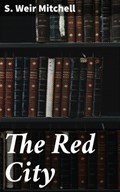In "The Red City," S. Weir Mitchell presents a rich tapestry of urban life and its psychological implications in the late 19th century. The narrative unfolds in a vivid cityscape, intricately exploring themes of identity, isolation, and the evolution of societal norms. Mitchell'Äôs prose is marked by its intricate descriptions and acute observations, reflecting the influences of realism and naturalism, which were prominent during this period. The novel not only depicts the frenetic pace of urban existence but also serves as a critique of modernity and its effects on individual psyche, revealing the fragility of human connections amidst the chaos of city life. S. Weir Mitchell was a prominent American physician and author whose interests in psychology and human behavior heavily informed his writing. His background in medicine, particularly his work with nervous disorders, provided him with a unique perspective on the complexities of mental health. This expertise is evident in "The Red City," where he masterfully intertwines medical observations with literary craftsmanship, exploring how the frenetic energy of urban life can precipitate psychological turmoil and disconnection. "The Red City" is a compelling read for those intrigued by the intersection of psychology and urbanity in literature. Mitchell'Äôs profound insights, combined with his adept storytelling, offer a reflective exploration of human nature that resonates even today. Readers looking to delve into a nuanced portrait of 19th-century urban life will find this novel both enlightening and thought-provoking.

